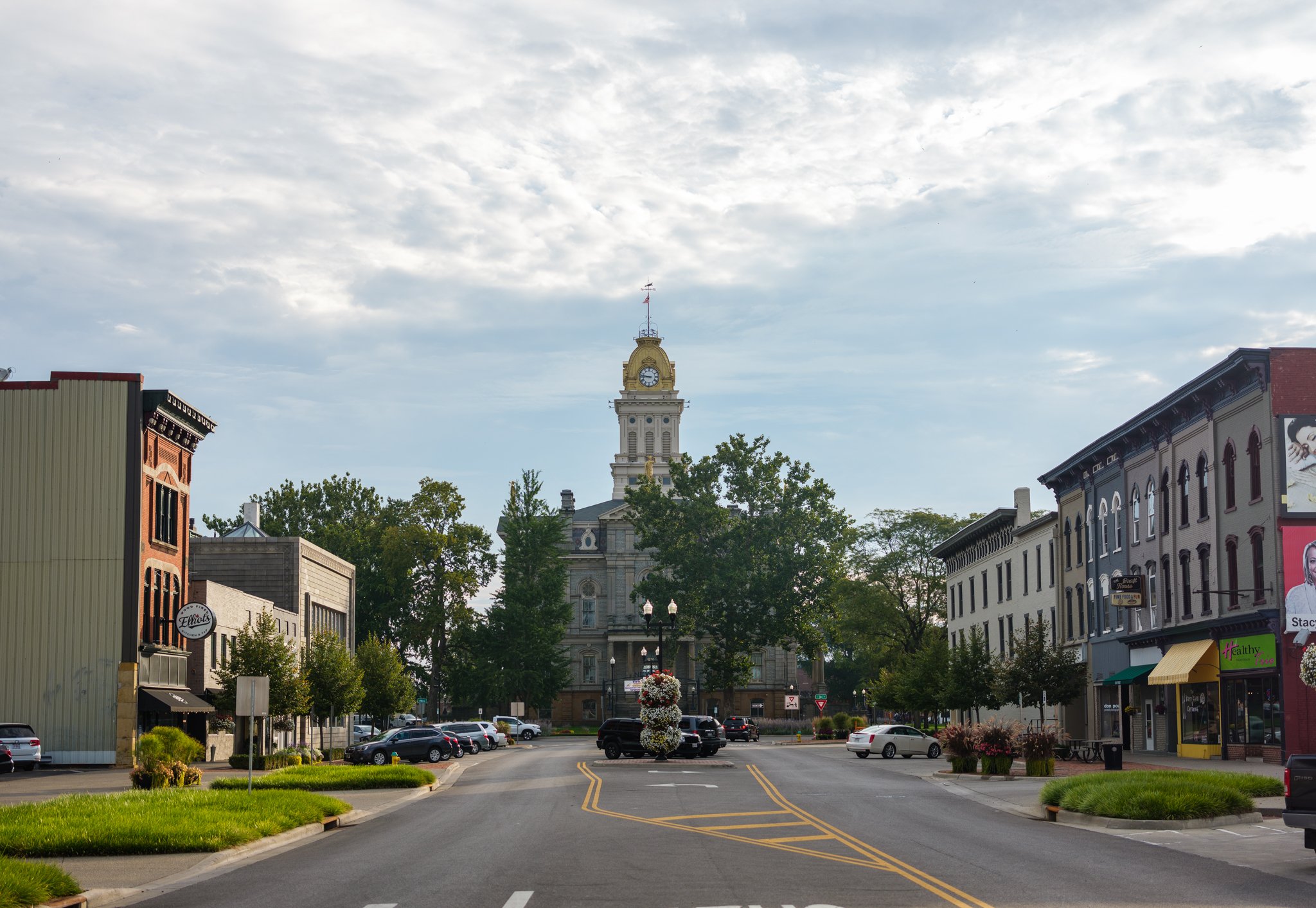Before we begin, I must confess I am not from Licking County. I have strong family connections to the area, however, and visited frequently over summer breaks and holidays. Some of my fondest memories of visiting Newark as a kid involve Courthouse Square, and I have always been fascinated by its centerpiece: The Courthouse. The town in which I grew up had no bustling town square, so coming to Newark and seeing the Courthouse all lit up at Christmas or glittering in the summer sun was, and still is, a treat.
Tim Bub - Licking County Commissioner
Within Licking County, there is perhaps no one more familiar or protective of the history and significance of the Courthouse than County Commissioner Tim Bubb. A Licking County native, Bubb was elected a Commissioner in 2004, but has been an active participant in community affairs since the 1970s. He has dedicated his career to the care, upkeep, and preservation of the historic Courthouse. Commissioner Bubb graciously took me on a personal tour of the Courthouse from bottom to top and shared his knowledge about its history and his hopes for its future.
The current structure is not the first to occupy the space at Number 1 Courthouse Square. The first courthouse, made of logs dragged from the surrounding wilderness, served as both courthouse and church. The second and third were made of brick and quickly became obsolete as Licking County rapidly developed. When the third Courthouse was destroyed by fire in 1875, residents had begrudgingly put up with the out-of-date building for several decades, and many were relieved to see it go. Colonel Charles H. Kibler, at the dedication of the fourth Courthouse, described the old building as an “unhygienic nuisance” and publicly declared that he “approved the accidental destruction.”
When the cornerstone of the current Courthouse was laid on July 4, 1876 – a date strategically picked to coincide with the centennial of the American Revolution – Licking County had fewer than 40,000 residents and its economy was largely agrarian. County officials hired architect H.E. Meyer of Cleveland to design a building which Commissioner Bubb believes would signify to the world that Licking County was no longer an untamed wilderness, but a metropolis on the rise. Meyer utilized the avant-garde Second Empire architectural style, drawing influence from the opulent cultural buildings of Europe to indicate that Licking County wasn’t so backwoods after all.
Meyer’s sophisticated design created a building which has withstood the test of time — if one is willing to overlook the clock tower incident (read on) — and remains standing longer than most buildings of a similar age. The Courthouse has stood faithfully for over a century on its little patch of parkland and was constructed before Newark’s Warren S. Weiant established the first independent telephone company in the United States, before Augustus H. Heisey founded his world-famous glass factory, before the Scheidler Machine Works occupied the building on South First Street, before the Historic Jail was constructed, and before Buckeye Lake officially got its name and established itself as the playground of the county.
The imposing structure is three stories of Sandusky limestone atop a foundation of sandstone which may have been quarried from Black Hand Gorge. The four original entrances, one for each cardinal direction, are guarded by four identical statues of Lady Justice brandishing the sword of Truth. Towering 180 feet above the mansard roof is the domed clock tower. The four clock faces have kept the people and businesses of Newark on time since 1879, when the entire clock tower had to be rebuilt after a fire. To prevent future fires, county officials chose to reconstruct the clock tower of stone. So far, that plan has succeeded.
Impressive architecture and historic charm do not stop at the exterior. The second and third floors exude an old-world ambiance accentuated by gilt chandeliers, elaborate crown molding, embossed ceilings, and gleaming woodwork. Nowhere is the historic charm grander than the Common Pleas Courtroom on the third floor. If the Courthouse is the centerpiece of Newark, then the courtroom is the crown jewel of the Courthouse. Swathed in gilt finishes and decorated with murals that depict historical events and biblical justice, guarded by the eyes of several great men, the Courtroom is considered by many to be one of the most beautiful in the state.
The courtroom is in its own right a museum, filled with architecture, art, and antiques. Countless people have sat under its domed ceiling, and many have left their mark. The painted murals on the ceiling are darkened by smoke damage, possibly a result of the 1879 clock tower fire, but most likely due to years of cigar and cigarette smoke from a time when smoking was permitted in public spaces. Scratches down the center of the first row of benches were left by the belt of prisoners’ restraints as they awaited their time to face the judge. Toward the back of the room stands a wooden case containing a special artifact: a small iron bell, on permanent loan from the Robbins Hunter Museum in Granville, which is the only remnant of Licking County’s first Courthouse.
To maintain the museum-like quality of the Courthouse, the Commissioners have focused a lot of time and budget on upkeep. As landlords of the Courthouse, they are committed to preserving the building so future generations may enjoy it, but also implementing modern conveniences where they can. In recent years, the Commissioners have added a new elevator, automated clocks, and a carillon system to the clock tower. In 2016, extensive work was done to the exterior, including the installation of a new roof and permanent LED lighting so the building could be easily illuminated for special events. The new lights are especially useful during the holiday season, when the Courthouse is lit from top to bottom with festive lights to become the community Christmas ornament.
During 2022, the Commissioners will focus on replacing the Courthouse’s windows. Commissioner Bubb also hopes to oversee a restoration of the Common Pleas Courtroom, which will include cleaning and touch-up of the murals and restoration of the original finishes on the decorative features around the room. The Commissioners are considering running a contest to select the subjects for two mural panels over the judge’s bench, which were left blank for future artistic endeavors.
With such thoughtful care being put into its upkeep, the Courthouse should stand for another 150 years.















